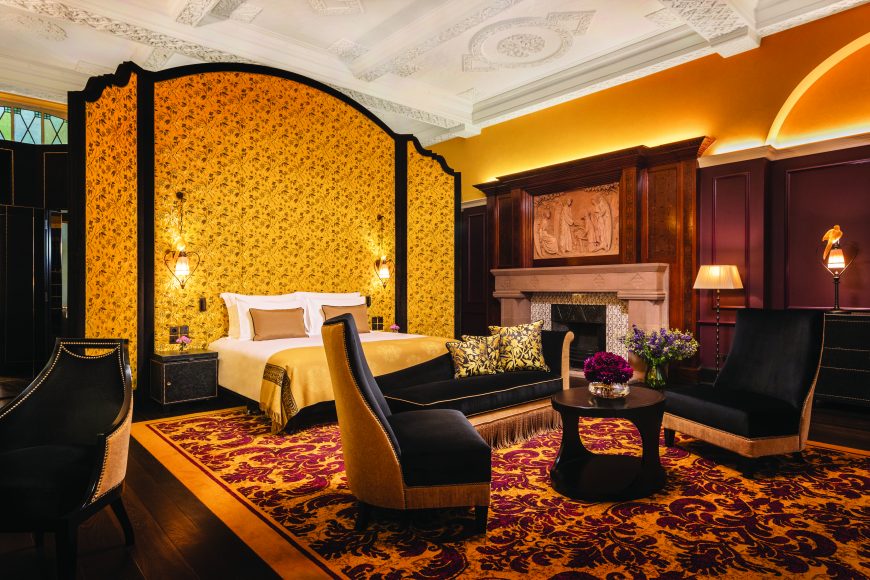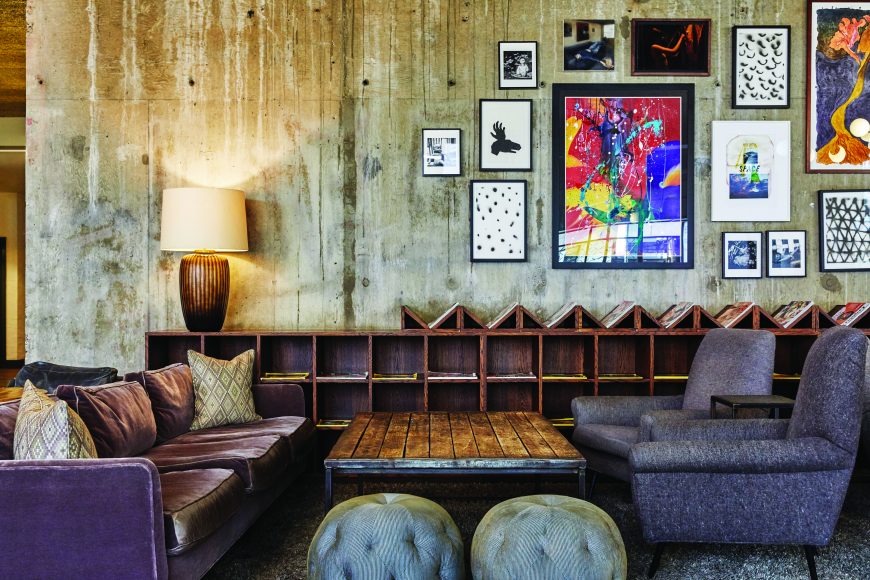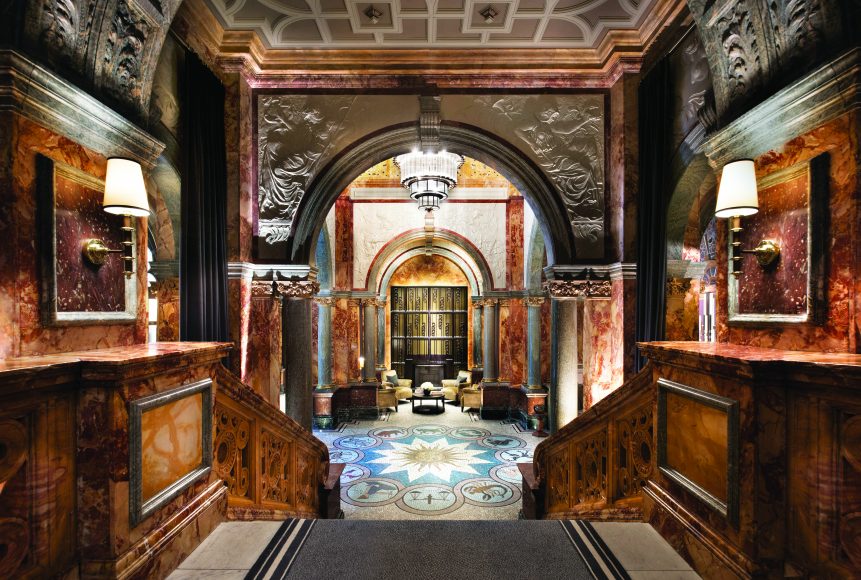“What are we going to do about Holborn?” That might have been a question Londoners asked themselves even five or six years ago, but you can bet your penultimate pound nobody’s asking it now.
Talk about the wrong side of the tracks. The London district of Holborn was a few too many blocks west of the West End for anyone to pay much attention to it. Covent Garden and Theatreland smiled benignly on the other side of Kingsway, to try and make Holborn feel better about itself, but ultimately could do nothing to raise its stock. Another neighbor, the Bloomsbury district, did its level best to help but had down-at-heel issues of its own, while smug Fitzrovia, less than half a mile away — with its 18th-century houses and handsome town squares — could barely hide its disdain.
Holborn was the “midtown” of London — essential but uninteresting, necessary but gray with grimy, well- trodden streets and tired people.
And then, suddenly, everything changed. In 2013, Rosewood, the rather talented hotel people who just happen to run The Carlyle in New York, bought a magnificent building, smack in the heart of the hood. With its 306 sumptuously appointed rooms and suites, a chic bar called Scarfe’s (it had Bemelmans to live up to, after all), luxury Sense spa and hopping restaurant, Holborn had never seen anything like it — well , not in living memory.
Still, there were naysayers. “Nine-day wonder,” said some, “flash in the pan,” said others. “Rosewood shmozewood” nobody actually said, because Londoners don’t express themselves quite like that, but it certainly chimed with what many were thinking. Holborn was never going to catch on.
Six years on, though, and the naysayers have fallen silent. Rosewood is probably one of the top half-dozen hotels in the capital and Holborn is positively lit.
What happened next? A year after Rosewood launched, the oh-so-hip Hoxton opened its second hotel, at the western edge of High Holborn, the hood’s central thoroughfare. The Hoxton — the fast-expanding group that now has an outpost in Williamsburg, Brooklyn — has brought life to a once drab, utilitarian part of London. Its lobby hums day and night with fabulous folk and there are cocktails around the clock. With reasonably priced rooms and a branch of the cool London eatery, Chicken Shop (from the people behind Soho House) in the basement, the Hoxton has it all, as cleverly conceived as it is stylishly executed. And it’s stylish all right — with designs by students from London’s famed art school, Central Saint Martins, along with scenes from Charles Dickens novels etched on the wallpaper.
Who the Dickens? Well, quite. The connection is that the novelist lived in Holborn for three years, from 1837. Today, his former dwelling, at 48 Doughty St., where he wrote “Oliver Twist” and two other novels, is the home of the Charles Dickens Museum, where the writer’s desk is one of the star exhibits.
Scratch a little at the surface and Holborn, of course, is literary through and through. Doughty Street is also home to the offices of The Spectator, Britain’s crisp, cultural weekly magazine, as well as the highbrow London Review of Books, while publishers in neighboring Bloomsbury are two a penny.
A tribute to Oscar Wilde, the eye-popping new L’oscar Hotel opened its doors in June 2018. Located in a former Baptist church dating from 1903, the 39-room L’oscar, designed by Jacques Garcia of Hôtel Costes in Paris and La Mamounia in Marrakech fame, owes everything to extravagant, occasionally louche excess, and very little to restraint. Fabrics are rich and decadent — velvets, silks and damasks abound — and the lighting, low and sepia, almost seems to invite bad behavior (not that you ever would.) No detail has been overlooked, from the embroidered peacock motifs, to the statues of nymphs, to the tasseled purple pouffes — all of which could have made L’oscar a shrine to high camp, were it not so darn comfortable that you never want to leave the bedroom. And service is so oiled that staff seem to know what you want before you have thought of it yourself.
A hundred yards along Southampton Row, with massive Russell Square to your left, you come to the new Kimpton Fitzroy London hotel, open just a year, which is the flagship hotel in Europe for the rapidly expanding InterContinental Hotel Group’s Kimpton Hotels & Restaurants brand. A vast, late-Victorian pile, the hotel was, until recently, the Hotel Russell, a faceless tourist hotel that no self-respecting Londoner had ever had any curiosity about, let alone reason to step inside.
Now, though, with its thé-au-lait (tea with milk) terracotta façade restored, it seems everyone is descending on the Kimpton, to admire its 19th-century mosaics, gawp at its carved stairways and caryatids, drink tea in its luxurious palm court, wander in its sunken winter garden, dine in its four restaurants, ogle its original Victorian stained glass and — if you’re a genuine tourist — to sleep in one of its 334 luxuriously appointed guestrooms. What many visitors to the hotel don’t know is that the original hotel was designed by one Charles Fitzroy Doll, who also designed the first-class dining room on the Titanic. “Lucky George,” a bronze dragon which can be found on the hotel’s second-floor staircase, is one of an identical pair, Its twin, as you may have guessed, went down with the ship.
For all its newfound trendiness, Holborn is unlikely to forget its past. History, and the preservation of history, rests too heavily on it. The Parthenon Marbles, Rosetta Stone and iconic mummies lurk diagonally across Russell Square, in the British Museum. And just steps from L’oscar and Rosewood, behind Holborn tube station, the Sir John Soane Museum — the exquisite former home of one of London’s most distinguished architects — has been left untouched (at Soane’s request) since his death 180 years ago.
Something old, something new: Holborn, it seems, has it all. Next time your travels take you to London, come see for yourself.
For more, visit rosewoodhotels.com, locar.com, ihg.com, britishmuseum.org, dickensmuseum.com and soane.org.




